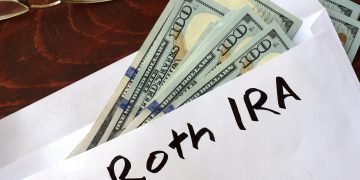For the past few decades, defined-benefit pension plans have been steadily declining, while defined-contribution plans, like 401(k) plans, have increased significantly. In point of fact, participation in defined-contribution plans has tripled over the same time period, while defined-benefit plans have seen a decline from 148,096 plans in 1980 to 56,045 plans in 1998 (the most recent year for which data is available). October 2004, Federal Reserve Bank of Dallas In 2003, defined-benefit plans covered 44 million people, of whom 27 million were retirees and only 17 million were employed.
This steady decline in defined-benefit plans is caused by a number of factors, including:
Costs for businesses went up as a result of the recent market declines, which had a significant negative impact on the value of pension assets. Additionally, the decline in interest rates had a significant negative impact on the liabilities for retiree benefits. The deficit is so significant that many businesses are now required to either begin investing substantial sums of money in these plans or investigate other options.
A more versatile workforce
Characterized benefit benefits plans give more critical advantages to laborers who stay with the organization for quite a while, with a significant part of the advantages procured during the most recent couple of long periods of business. The portability of 401(k) plans makes them appealing to younger workers as employees frequently switch jobs.
A shifting economy Historically, large manufacturing companies offered defined-benefit plans, frequently as a result of union negotiations and contracts. As the economy turned out to be more help-based, new organizations have picked 401(k) designs as opposed to characterized benefit plans.
Even businesses that offer defined-benefit plans are looking for ways to cut costs significantly. Companies can alter future benefits, but they cannot eliminate benefits that have already been earned.
A portion of the more normal choices include:
Offer a cash-balance plan to new hires and current employees. Although a cash-balance plan is technically a defined-benefit plan, its operation differs significantly from that of a conventional pension plan. A cash-balance plan provides employees with a lump sum that can be used for retirement or the purchase of an annuity instead of a guaranteed pension for life. The payments are still entirely financed by the employer. By the last part of the 1990s, 11% of all customary characterized benefit plans had been switched over completely to cash-balance plans, addressing 40% of all characterized benefit resources.
Freeze the characterized benefit plan
Benefits are frozen at the moment so workers procure no extra advantages. In return, the business might increase 401(k) plan contributions.
Stop the plan The most drastic approach is to stop the plan. The assets of the plan are used to either purchase an insurance company’s annuity or make one-time payments to employees when the plan is terminated.
Keep in mind that the pension benefits you rely on might change if you have a defined-benefit plan at work. Benefits you have now cannot be counted on, nor can benefits you might get in the future. As a result, you might want to look over your retirement plans to see if you’ve overemphasized the benefits of your retirement plan.
















